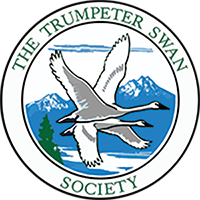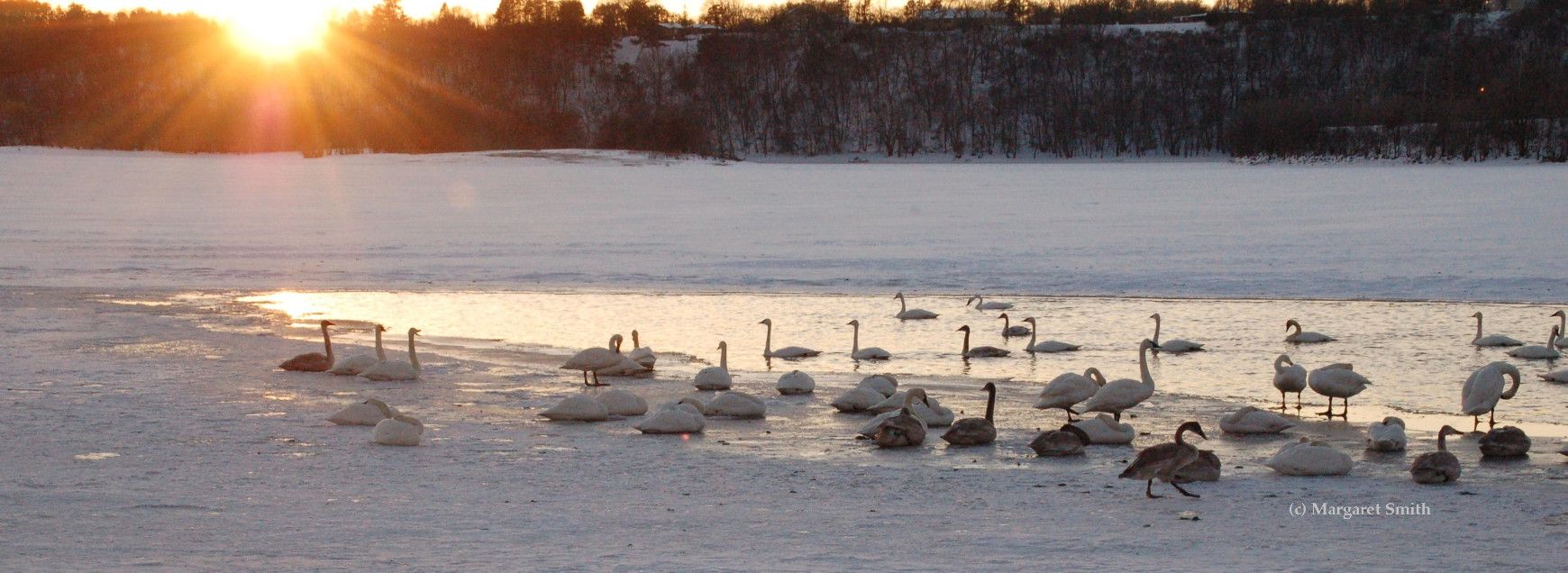AGENCY DECISION THREATENS TRUMPETER SWANS IN IDAHO
by Ruth Shea
A recent decision by the Idaho Department of Fish and Game (IDFG) to expand a late winter Snow Goose hunt in southeast Idaho would jeopardize Trumpeter Swan use of important prebreeding habitat near Fort Hall at the north end of American Falls Reservoir. TTSS is asking IDFG and the US Fish and Wildlife Service (USFWS) to reverse this decision and protect Trumpeter Swans in this area.
TTSS is not "antihunting." Several TTSS staff and Board members have been long-term managers of waterfowl hunts during their careers and TTSS is not opposed to well-managed waterfowl hunting. However, the design of this hunt is flawed. It would jeopardize important Trumpeter Swan habitat-use patterns that took many years, great effort, and great expense to create.
Beginning in 1988, the USFWS, the Pacific Flyway Council, the Shoshone-Bannock Tribes, Idaho, several other western states, and TTSS undertook a massive effort to disperse wintering Trumpeter Swans from high elevation areas of Harriman State Park, Idaho, and Red Rock Lakes NWR (RRLNWR), Montana. The goal was to encourage migrations southward to milder wintering sites where swans would gain access to new winter and early spring food sources.
This very difficult effort included termination of winter feeding at RRLNWR, massive hazing of swans from high-risk sites, and relocation of over 250 Trumpeters Swans to Fort Hall from RRLNWR (101), Harriman State Park (135), and from captive rearing (25+). Agencies spent hundreds of thousands of dollars to build the new migration to Fort Hall to help increase population security. Winter translocations involved nighttime capture on icy waters, often at near-zero temperatures, with great risk to those who braved those dangerous conditions.
The American Falls wintering area is the biggest success of the range expansion effort, with over 500 Trumpeters present in recent winters. Swans have gradually learned to field feed in areas north and west of the reservoir in late winter. Late-winter nutrition is key to nesting success of the region's Trumpeters and regional managers are struggling to protect and enhance these crucial prebreeding habitats. The proposed hunt expansion would open the most important swan prebreeding habitats to Snow Goose hunting from February 19 to March 10, when these areas normally receive heavy swan use.
TTSS will ask IDFG to reverse the hunt expansion and maintain at least the same secure areas provided by the 2010 hunt boundary. We also ask that IDFG closely monitor the distribution of swans and geese in the American Falls area during the hunt and take immediate measures to prevent hunter activity from displacing swans from their normal feeding areas if problems arise.
The USFWS and IDFG should also examine potential impacts of continuing a Snow Goose hunt in this area. Our primary concern is that any late hunt will concentrate Snow Geese in the closed areas with swans, thus increasing the potential for crop damage in the closed area, as well as disease transmission from geese to swans. Watch our website for updates on this issue.

